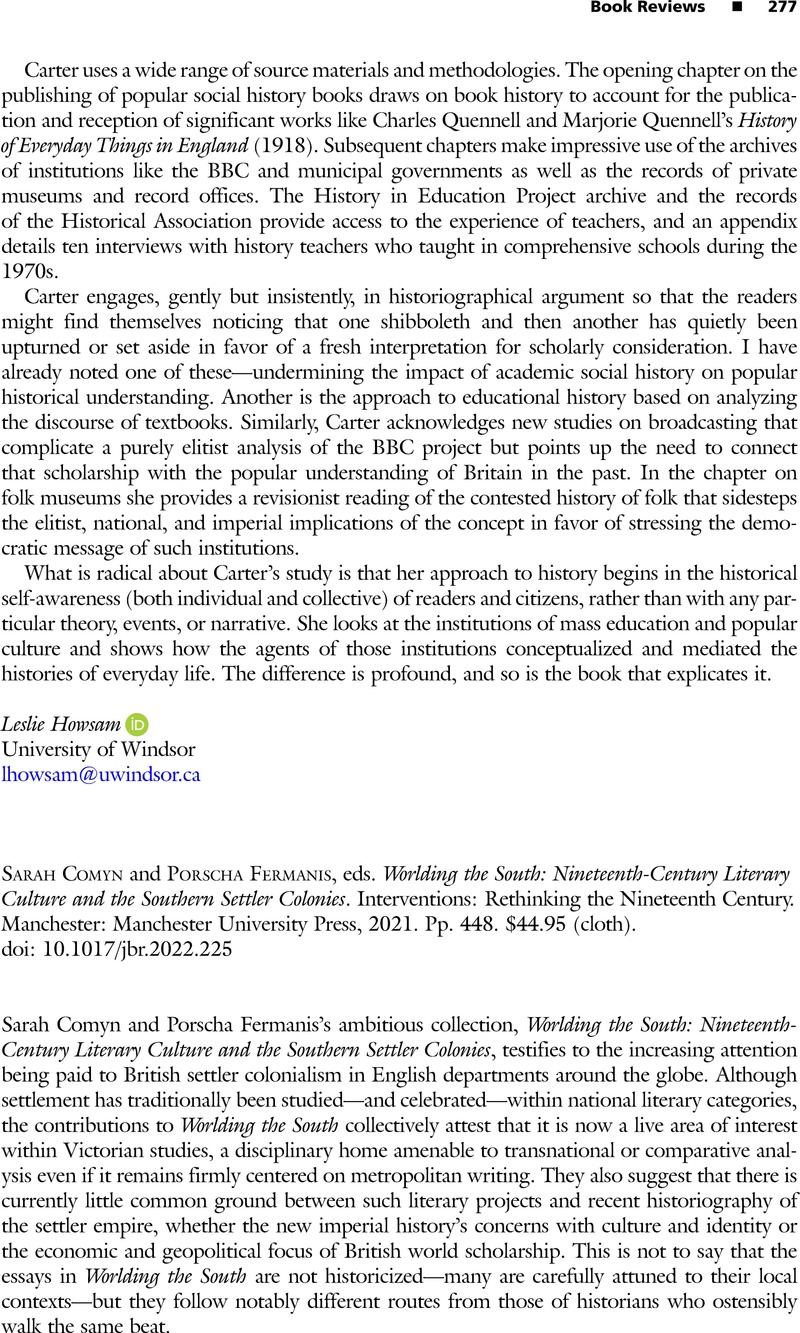No CrossRef data available.
Article contents
Sarah Comyn and Porscha Fermanis, eds. Worlding the South: Nineteenth-Century Literary Culture and the Southern Settler Colonies. Interventions: Rethinking the Nineteenth Century. Manchester: Manchester University Press, 2021. Pp. 448. $44.95 (cloth).
Review products
Sarah Comyn and Porscha Fermanis, eds. Worlding the South: Nineteenth-Century Literary Culture and the Southern Settler Colonies. Interventions: Rethinking the Nineteenth Century. Manchester: Manchester University Press, 2021. Pp. 448. $44.95 (cloth).
Published online by Cambridge University Press: 03 March 2023
Abstract
An abstract is not available for this content so a preview has been provided. Please use the Get access link above for information on how to access this content.

Information
- Type
- Book Review
- Information
- Copyright
- Copyright © The Author(s), 2023. published by Cambridge University Press on behalf of the North American Conference on British Studies


